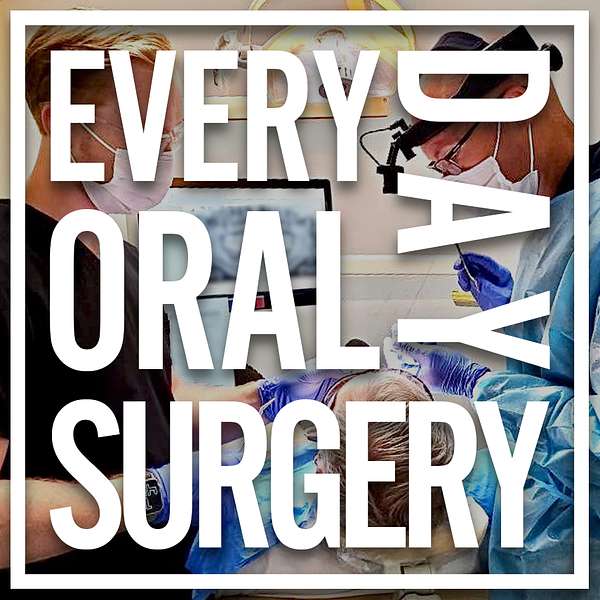
Everyday Oral Surgery
Everyday Oral Surgery
Persistent Idiopathic Dentoalveolar Pain: Dx and Tx Options (with Dr. Hayley Vatcher, Oral Medicine Specialist)
Persistent dental pain without a clear cause can be one of the most frustrating challenges in oral surgery. In this episode, Dr. Hayley Vatcher, an Oral Medicine Specialist at Charleston Oral and Facial Surgery, unpacks the complexities of atypical odontalgia, also known as phantom tooth pain, persistent idiopathic dentoalveolar pain (PIDP), or persistent dentoalveolar pain disorder (PDPD). She explains how this neuropathic condition is often misdiagnosed, leading to unnecessary dental procedures, and emphasizes the importance of identifying its characteristic features, such as constant, localized pain that persists despite normal imaging and testing. Dr. Vatcher walks through her diagnostic approach, treatment options, which range from tricyclic antidepressants to localized Botox injections, and how harnessing the power of neuroplasticity can help break the pain cycle. Tune in to learn how understanding this underrecognized condition can change outcomes and restore trust for patients living with chronic oral pain!
Key Points From This Episode:
- Exciting updates and announcements: upcoming book club and Everyday Oral Surgery blog.
- Today’s guest and topic: Dr. Hayley Vatcher discusses atypical odontalgia (AO).
- Additional terms for AO: persistent idiopathic dentoalveolar pain (PIDP) or persistent dentoalveolar pain disorder (PDPD).
- The definition of AO, PIDP, and PDPD: chronic oral pain without an identifiable cause.
- Why PIDP doesn’t respond to conventional dental treatments.
- How misdiagnosis of PIDP can lead to unnecessary procedures.
- Typical PIDP symptoms: constant, localized pain in one region of the mouth.
- Diagnosing PIDP: ruling out other causes like sinus issues, TMD, or trigeminal neuralgia.
- First-line treatment options, including tricyclic antidepressants and anticonvulsants.
- The high success rate of localized Botox injections for targeted relief.
- Other treatment options, including cognitive behavioral therapy (CBT) and meditation.
- Benefits of topical compound rinses as a conservative treatment.
- Why Dr. Vatcher doesn’t recommend extractions and irreversible procedures for PIDP.
- Anatomy features and demographics that make you more likely to experience PIDP.
- Dr. Vatcher’s guide to using Botox treatment for PIDP patients.
- A breakdown of PIDP as a neuropathic pain condition.
- The important role of neuroplasticity in long-term pain relief and breaking the pain cycle.
- Helping patients feel heard and validated through proper diagnosis.
- Lifestyle tips for PIDP: anti-inflammatory diet, exercise, TMD-friendly foods, and more.
Links Mentioned in Today’s Episode:
Dr. Hayley Vatcher — https://www.charlestonoralandfacialsurgery.com/hayley-vatcher
Dr. Hayley Vatcher on LinkedIn — https://www.linkedin.com/in/hvatcher/
Dr. Hayley Vatcher on Instagram — https://www.instagram.com/dr.hayleyvatcher/
Dr. Hayley Vatcher Email — hvatcher@gmail.com
Charleston Oral and Facial Surgery — https://www.charlestonoralandfacialsurgery.com/
Everyday Oral Surgery Blog — https://everydayoralsurgery.blog/
The Dichotomy of Leadership — https://www.amazon.com/Dichotomy-Leadership-Balancing-Challenges-Ownership/dp/1250195772
Bell’s Oral and Facial Pain 7th Edition — http